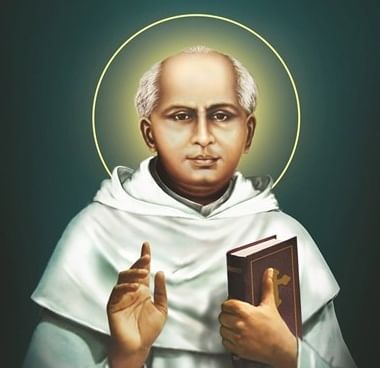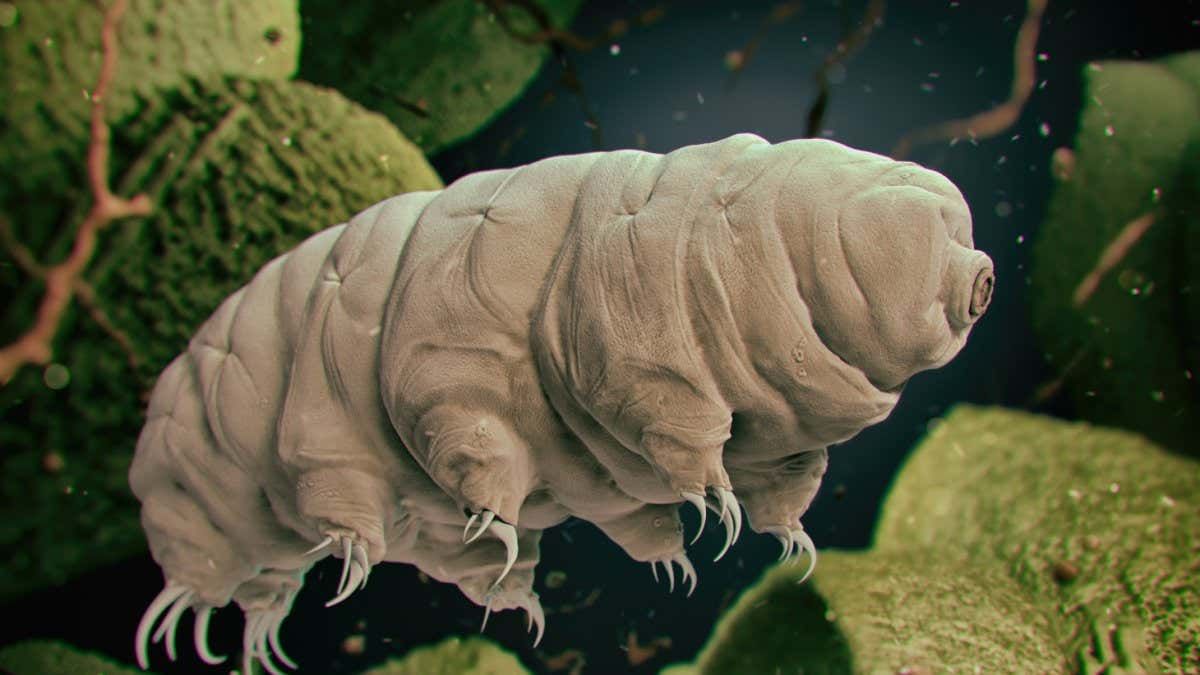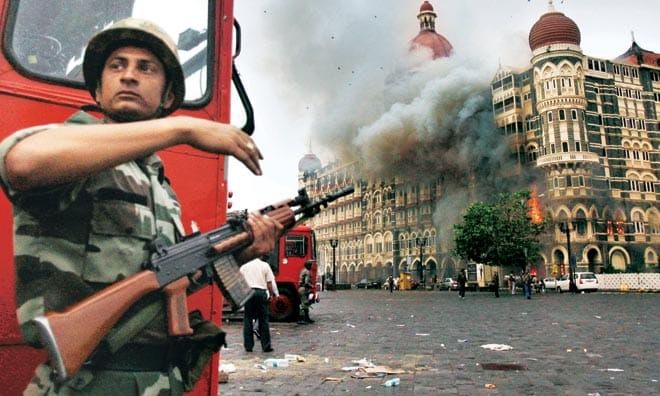CLAT Exam > CLAT Notes > Current Affairs: Daily, Weekly & Monthly > UPSC Daily Current Affairs- January 5, 2022
UPSC Daily Current Affairs- January 5, 2022 | Current Affairs: Daily, Weekly & Monthly - CLAT PDF Download
GS-I
Western Disturbances to bring rain in New Delhi

Content
- Under the influence of two consecutive western disturbances, New Delhi is in for a wet spell.
About Western Disturbances
- A western disturbance is an extratropical storm originating in the Mediterranean region that brings sudden winter rain to the northwestern parts of the Indian subcontinent.
- It is a non-monsoonal precipitation pattern driven by the westerlies.
- The moisture in these storms usually originates over the Mediterranean Sea, the Caspian Sea and the Black Sea.
- Extratropical storms are global phenomena with moisture usually carried in the upper atmosphere, unlike their tropical counterparts where the moisture is carried in the lower atmosphere.
- In the case of the Indian subcontinent, moisture is sometimes shed as rain when the storm system encounters the Himalayas.
- Western disturbances are more frequent and strong in the winter season.
Impact: Winter Rainfall and Extreme Cold
- Western disturbances, specifically the ones in winter, bring moderate to heavy rain in low-lying areas and heavy snow to mountainous areas of the Indian Subcontinent.
- They are the cause of most winter and pre-monsoon season rainfall across northwest India.
- An average of four to five western disturbances forms during the winter season.
Its significance
- Precipitation during the winter season has great importance in agriculture, particularly for the rabi crops.
- Wheat among them is one of the most important crops, which helps to meet India’s food security.
Saint Kuriakose Elias Chavara

Context
- The 150th death anniversary of Saint Kuriakose Elias Chavara was commemorated on January 3.
Saint Kuriakose Elias Chavara
- About
- He was born in 1805 at Kainakary, Kerala, India.
- He was a social reformer, an educationist, a social entrepreneur, and a prolific poet.
- He triggered a renaissance in Kerala in the 19th century.
- Contribution
- Educational Reforms
- He was a pioneer of education reforms.
- When education was the privilege of the social elites, his Pallikkoodam movement (setting up schools in church premises) enabled universal access to education.
- He ordered that schools be set up on all church premises and threatened to close down those that failed to comply.
- He also started free mid-day meals and provided clothes and books to reduce drop-outs among the poor and Dalit students.
- The practice initiated by Saint Chavara in Christian schools influenced the diwan of Travancore, C P Ramaswamy Iyer, to plan mid-day meals in government schools in 1936.
- Major Establishments
- In 1846, Saint Chavara established a Sanskrit school in Mannanam in Kerala, that enabled ordinary people to study the sacred Hindu literature in Sanskrit.
- In 1831, he founded the first indigenous religious congregation for men, now known as the Carmelites of Mary Immaculate (CMI).
- In 1846, with the permission of Swathi Thirunal, the maharajah of Travancore, Saint Chavara founded a printing press in Mannanam and published educational materials and books to promote social harmony.
- The first religious congregation for women (CMC-CTC) he founded in 1866.
- He founded a House of Charity in 1869 in Kainakari, his native village, for the aged, the abandoned and the sick.
- Literary works
- He was well-versed in Malayalam, Sanskrit, Latin and Syriac.
- His poem Anasthasyayude Rakthasakshyam (The Martyrdom of Anastasia, 1862) is considered the first minor epic in Malayalam.
- Atmanutapam (Compunction of Heart) reveals the yogic poet in him exploring the rumblings of the inner self.
- Oru Nalla Appante Chavarul (Testament of a Loving Father) is a treatise on the upbringing of children, settling family disputes and the importance of writing wills.
- Legacy
- He was an apostle of peace and religious harmony. In his autobiography, Nalagamam (Chronicles), Saint Chavara vividly narrates how Hindus, Muslims and Christians together toiled hard to establish his monastery in Mannanam.
- He realised that God’s glory relies on the greatness of humans.
- He was a true karma yogi, contemplative in action and working tirelessly to liberate people from the tyrannies of ignorance, poverty, and sickness.
- Death
- He spent the last seven years of his life at Koonammavu, Kerala, where he died on 3 January 1871 and was buried in Saint Philomena’s Church, Koonammavu.
GS-II
Economically Weaker Sections (EWS): As defined by Govt Panel

Context
- The government has accepted the report by a committee under the Ministry of Social Justice and Empowerment, which examined the income criteria for determining who are to be included among the EWS.
EWS Quota: A Backgrounder
- On July 29 last year, the Centre had issued a notification for implementing 10% reservation for EWS along with 27% for OBC within these courses.
- Following the petitions, the Supreme Court has stayed counselling for admission until the matter is decided.
- The NEET notification followed the same criteria for determining EWS as mentioned in a notification from the Department of Personnel and Training (DoPT).
Inception of EWS Quota
- EWS reservation was granted based on the recommendations of a commission headed by Major General (retd) S R Sinho.
- The Commission for Economically Backward Classes was constituted by the then UPA government in 2005, and submitted its report in July 2010.
- Based on this, the Cabinet in January 2019 decided to amend the Constitution (103rd Amendment) to provide reservation to EWS.
Why was the new committee constituted?
- The committee aimed to revisit the criteria for determining the economically weaker sections in terms of the provisions of the explanation to Article 15 of the Constitution.
- It followed the Supreme Court’s observation that the income criterion for determining EWS was “arbitrary”.
- The Supreme Court is presently hearing a number of petitions, including a special leave petition filed by the Centre against a Madras HC order on EWS and OBC reservation in the all-India quota for NEET.
Prime basis: Income criteria
- The criteria include an Rs 8 lakh income ceiling for inclusion in EWS — which is the same as the criterion for deciding the “creamy layer” among the OBCs (those who are not in government).
- The notification said income shall include income from all sources i.e. salary, agriculture, business, profession, etc for the financial year prior to the year of application.
- Another criterion is that a person whose family owns or possesses 5 acres of agricultural land or more will be excluded from EWS.
How does it address the questions raised by the Supreme Court?
- The Supreme Court has earlier questioned the basis of Rs 8 lakh criteria and termed it arbitrary without any substantiation.
- It asserted that this criteria is similar to that of Creamy Layer in OBCs.
What did the committee say on Income Criteria?
- The committee’s report now states the two sets of criteria are significantly different despite both using the Rs 8 lakh cut-off and that the criteria for the EWS.
- EWS criteria are much more stringent than those for the OBC creamy layer.
- The report justifies this income limit, stating that Rs 8 lakh cut off also has a link with the income tax exemption limit.
- It would, therefore, be logical to use the income tax exemption limit to determine the threshold for EWS.
Mukhyamantri Krishak Uparjan Sahayta Yojna

Context
- Recently, the Madhya Pradesh government gave its approval to Mukhyamantri Krishak Uparjan Sahayta Yojna.
About Mukhyamantri Krishak Uparjan Sahayta Yojna
- It is aimed at providing budgetary allocation to enable government agencies such as Food and Civil Supplies Corporation and Markfed to tide over operational losses incurred during the procurement of grains from farmers.
- This scheme had been brought to ensure agencies such as MP Markfed out of the vicious cycle of paying heavy interest on loans taken to ensure procurement and timely payment to farmers.
- The move was undertaken to ensure farmers get a fair market price.
- However, the cost of increased procurement was borne by the state government through loans.
- The dues are paid back to the state government only once the stock is lifted from the godown.
Nai Talim

Context
- The Vice President of India has said that the New Education Policy follows the ‘Nai Talim’ of Mahatma Gandhi by giving importance to the mother tongue as the medium of instruction at the school level.
About Nai Talim
- The phrase Nai Talim is a combination of two words- Nai Means ‘New’ and Talim – a Urdu word-means ‘Education’.
- In 1937, Gandhiji introduced the concept of Nai Talim in India. It aimed to achieve Gram Swaraj (liberation of villages).
- In short, Gandhiji dreamed to make all villages independent; and self-reliant.
- It is an approach to the total personality development of body, mind and spirit and was based on four principles namely:
- Education or learning in mother tongue along with handicraft work,
- Work should be linked with most useful vocational needs of the locality,
- Learning should be linked with vocational work, and
- Work should be socially useful and productive needed for living.
About Gandhiji and Education
- Gandhi’s first experiments in education began at the Tolstoy Farm ashram in South Africa.
- It was much later, while living at Sevagram (Wardha) and in the heat of the Independence struggle, that Gandhi wrote his influential article in Harijan about education.
- In it, he mapped out the basic pedagogy (or teaching) with focus on:
- Lifelong character of education,
- Social character and
- A holistic process
- Thus, for Gandhi, education is ‘the moral development of the person’, a process that is by definition ‘lifelong’.
- He believed the importance of role of teacher in the learning process.
GS-III
Tardigrade

Context
- Scientists have identified the first ''quantum entangled'' animal in history in a recent study.
About Tardigrade
- They are microscopic multicellular organisms known to tolerate extreme physiochemical conditions through a latent state of life known as cryptobiosis.
- Their proportions are a little bit similar to a bear’s.
Quantum and biological systems
- These systems are seldom discussed together as they seemingly demand opposing conditions. Life is complex, “hot and wet” whereas quantum objects are small, cold and well-controlled.
Significance of Tardigrade
- The coupling between the animal in cryptobiosis and a superconducting quantum bit prepared a highly entangled state between this combined system and another qubit.
- The tardigrade itself is shown to be entangled with the remaining subsystems.
- The tardigrade is mostly (frozen) water, and here it acts like a dielectric, shifting the resonance frequency of the one qubit that it sat on.
- The researchers have claimed that the investigation is perhaps the closest realization combining biological matter and quantum matter available with present-day technology.
Multi-Agency Centre (MAC): A common counter-terrorism grid

Context
- States are often reluctant to share information on the platform.
- There are several gaps in sharing critical information at the right time.
- Plans are afoot for more than a decade to link the system up to the district level.
About MAC
- The Multi-Agency Centre (MAC) was formed in December 2001 following the Kargil intrusion and the subsequent overhaul of the Indian national security apparatus suggested by the Kargil Review Committee report.
- Accordingly, the Intelligence Bureau (IB) was authorized to create a multi-agency centre (MAC) in New Delhi.
- Now functioning 24 × 7 as the nodal body for sharing intelligence inputs, MAC coordinates with representatives from numerous agencies, different ministries, both central and state.
- Various security agencies share real-time intelligence inputs on the MAC.
- The state offices have been designated as subsidiary MACs (SMACs).
- As many as 28 organisations, including the Research and Analysis Wing (R&AW), armed forces and State police, are part of the platform.
Understanding IC15, India’s first Crypto Index

Context
- Super app CryptoWire recently launched India’s first cryptocurrency index, IC15, which will measure the performance of the 15 most widely traded cryptocurrencies listed on leading crypto exchanges by market capitalization.
About IC15
- CryptoWire constituted an Index Committee of domain experts, industry practitioners, and academicians that will select cryptocurrencies from the top 400 coins in terms of market capitalization.
- The eligible cryptocurrency should have traded on at least 90% of the days during the review period and be among the 100 most liquid cryptocurrencies in terms of trading value.
- Also, the cryptocurrency should be in the top 50 in terms of the circulating market capitalization.
- The committee will then select the top 15 cryptocurrencies. The index will be reviewed quarterly.
What is its significance?
- IC15 can be replicated for creating index-linked products such as index funds or exchange-traded funds (ETFs).
- Usually, the performance of a mutual fund scheme is assessed with reference to a benchmark, which could be a total return index of the Nifty or the Sensex.
- IC15 is the first index in India that can act as a benchmark of the underlying cryptocurrency market and the performance benchmark for fund managers.
- Moreover, robo-advisors, which provide financial advice with moderate to minimal human intervention, can use this index to create investment products at lower costs.
Can index-based crypto investment reduce risks?
- Index investing can be an effective way to diversify against risks as a fund invests in a basket of assets against a few limited coins.
- However, index-based investing may not fully remove risks associated with investing in crypto assets.
- Case in point: IC15 saw a 50% plunge in 2018, whereas other asset classes have seen a maximum drop in the range of 3-4%.
- Further, bitcoin and ethereum have a combined weightage of 77% in the index, making it highly vulnerable to any volatility in these two coins.
How does IC15 correlate with other market indicators?
- IC15’s base value as of 1 April 2018 was 10,000.
- It would mean that the index has gained 615% in absolute terms to 71,475.48 by 31 December 2021.
Can crypto funds be launched in India?
- SEBI has recently asked mutual fund houses not to launch crypto-based funds until the Centre comes out with clear regulations.
- This means asset management companies for now won’t be able to launch crypto funds based on IC15.
- However, in the absence of any regulations, crypto platforms can offer products based on the index.
- Global crypto investment platform Mudrex last year launched Coin Sets—crypto funds based on themes such as decentralized finance or market cap.
The document UPSC Daily Current Affairs- January 5, 2022 | Current Affairs: Daily, Weekly & Monthly - CLAT is a part of the CLAT Course Current Affairs: Daily, Weekly & Monthly.
All you need of CLAT at this link: CLAT
|
844 docs|613 tests
|
FAQs on UPSC Daily Current Affairs- January 5, 2022 - Current Affairs: Daily, Weekly & Monthly - CLAT
| 1. What is the significance of GS-I in UPSC exams? |  |
Ans. GS-I refers to General Studies Paper-I in the UPSC exams. It is one of the papers in the preliminary stage of the Civil Services Examination. GS-I covers a wide range of topics such as History, Geography, Indian Polity, Economics, and Current Affairs.
| 2. What is GS-II in UPSC exams? |  |
Ans. GS-II stands for General Studies Paper-II in the UPSC exams. It is also known as the Civil Services Aptitude Test (CSAT). GS-II tests the candidate's comprehension, logical reasoning, analytical ability, decision-making, problem-solving, and basic numeracy skills.
| 3. What is the importance of daily current affairs in UPSC preparation? |  |
Ans. Daily current affairs play a crucial role in UPSC preparation. It helps candidates stay updated with the latest events, national and international issues, government policies, and socio-economic developments. It enhances their understanding of various subjects, improves their analytical skills, and enables them to answer questions related to current affairs in the UPSC exams.
| 4. How can I stay updated with daily current affairs for UPSC? |  |
Ans. To stay updated with daily current affairs for UPSC, candidates can follow various sources such as newspapers, news websites, government portals, and magazines. They can also subscribe to UPSC-specific current affairs magazines or newsletters. Additionally, there are several online platforms and mobile applications that provide daily current affairs updates specifically tailored for UPSC aspirants.
| 5. Why are Frequently Asked Questions (FAQs) important for UPSC preparation? |  |
Ans. Frequently Asked Questions (FAQs) are important for UPSC preparation as they help candidates in understanding the key concepts, clarifying doubts, and preparing effectively for the exam. FAQs provide concise and relevant information on frequently searched topics, making it easier for candidates to grasp important points and remember them during the exam.

|
Explore Courses for CLAT exam
|

|
Signup for Free!
Signup to see your scores go up within 7 days! Learn & Practice with 1000+ FREE Notes, Videos & Tests.
Related Searches

















